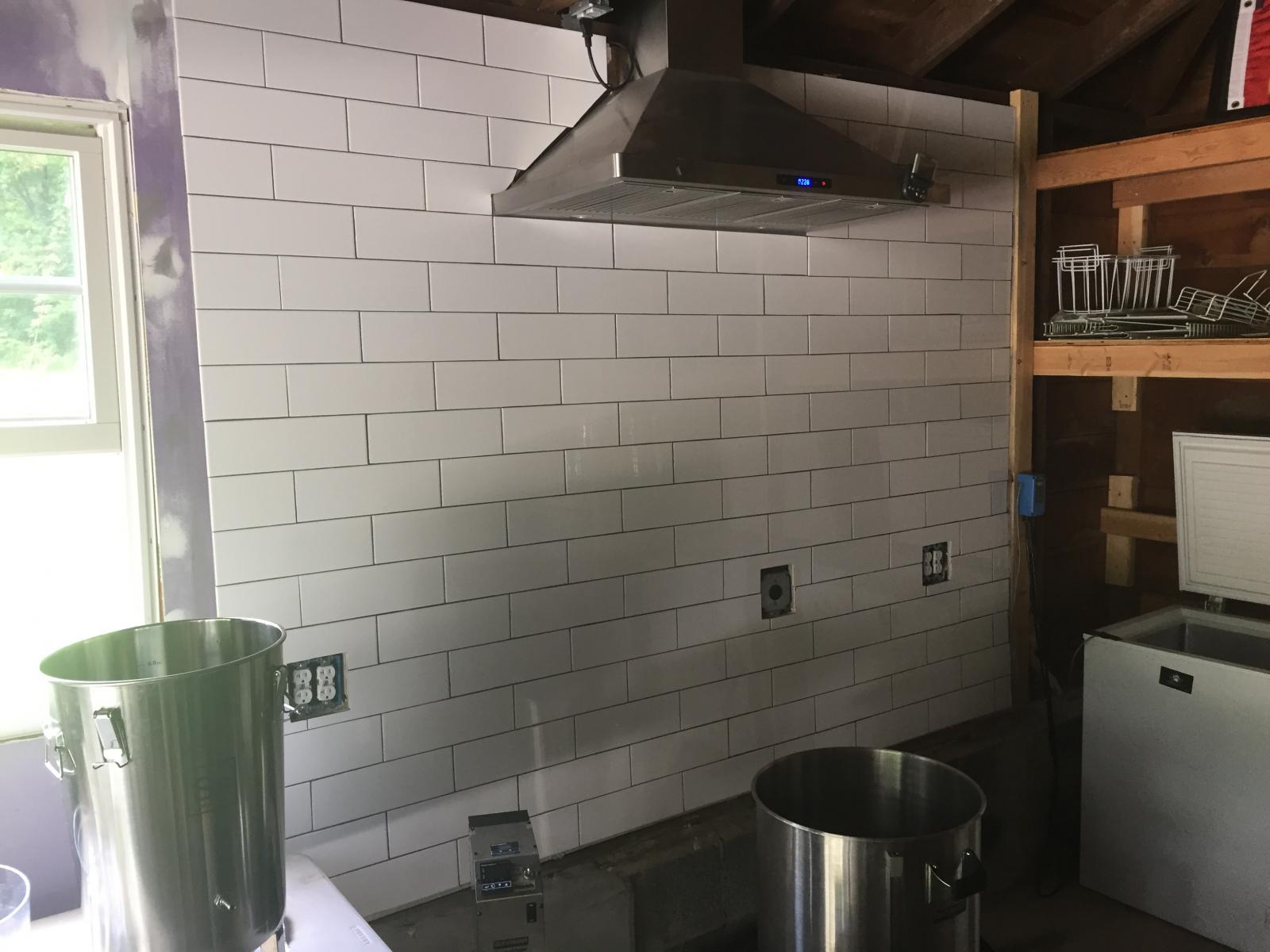Why am I getting such ****ty efficiency? I brewed the recipe today, and my OG is 1.062...53% Brewhouse Efficiency!!!!! What's going on here?
I initially had a pre-boil volume of 12.5 gallons (1.040) so I boiled off 1.5 gallons (1 hour), then began with 10.5 gallons of 1.048.
Can you help me at least narrow it down? Is this a conversion issue? Am i leaving too much sugar in the kettle? Water issue? Using well water with ph of 7.7, I add salts to get it to around 5.6ish.
Today's #s:
Conversion: 74.1%
Pre-Boil: 68% 25.2 ppg
Ending Kettle: 69% 26.6 ppg
Brew House: 53% 20.7 ppg
HOME BREW RECIPE:
Title: Football Kickoff IPA
Author: kr
Brew Method: All Grain
Style Name: Double IPA
Boil Time: 60 min
Batch Size: 7 gallons (fermentor volume)
Boil Size: 10 gallons
Boil Gravity: 1.053
Efficiency: 65% (brew house)
STATS:
Original Gravity: 1.075
Final Gravity: 1.012
ABV (standard): 8.25%
IBU (tinseth): 99.22
SRM (morey): 7.57
FERMENTABLES:
19 lb - American - Pale 2-Row (90.5%)
1 lb - American - Caramel / Crystal 40L (4.8%)
1 lb - Corn Sugar - Dextrose (4.8%)
HOPS:
1 oz - Apollo, Type: Pellet, AA: 18.5, Use: Boil for 60 min, IBU: 49.11
2 oz - Apollo, Type: Pellet, AA: 18.5, Use: Boil for 10 min, IBU: 35.61
1 oz - Simcoe, Type: Pellet, AA: 13.6, Use: Boil for 5 min, IBU: 7.2
1 oz - Citra, Type: Pellet, AA: 13.8, Use: Boil for 5 min, IBU: 7.3
1 oz - Citra, Type: Pellet, AA: 13.8, Use: Aroma for 0 min
1 oz - Apollo, Type: Pellet, AA: 18.5, Use: Aroma for 0 min
1 oz - Simcoe, Type: Pellet, AA: 13.6, Use: Aroma for 0 min
2 oz - Citra, Type: Pellet, AA: 13.8, Use: Dry Hop for 7 days
2 oz - Simcoe, Type: Pellet, AA: 13.6, Use: Dry Hop for 7 days
MASH GUIDELINES:
1) Infusion, Temp: 150 F, Time: 60 min, Amount: 16 gal
Starting Mash Thickness: 1.5 qt/lb
OTHER INGREDIENTS:
1 each - Whirlfloc, Time: 10 min, Type: Fining, Use: Boil
YEAST:
Omega Yeast Labs - West Coast Ale I
Starter: Yes
Form: Liquid
Attenuation (custom): 80%
Flocculation: Medium-low
Optimum Temp: 60 - 73 F
Fermentation Temp: 66 F
Pitch Rate: 1.0 (M cells / ml / deg P)
TARGET WATER PROFILE:
Profile Name: Light colored and hoppy
Ca2: 100
Mg2: 5
Na: 10
Cl: 50
SO4: 150
HCO3: 0
Water Notes:
Generated by Brewer's Friend -
https://www.brewersfriend.com/
Date: 2017-08-20 19:50 UTC
Recipe Last Updated: 2017-08-20 13:06 UTC




